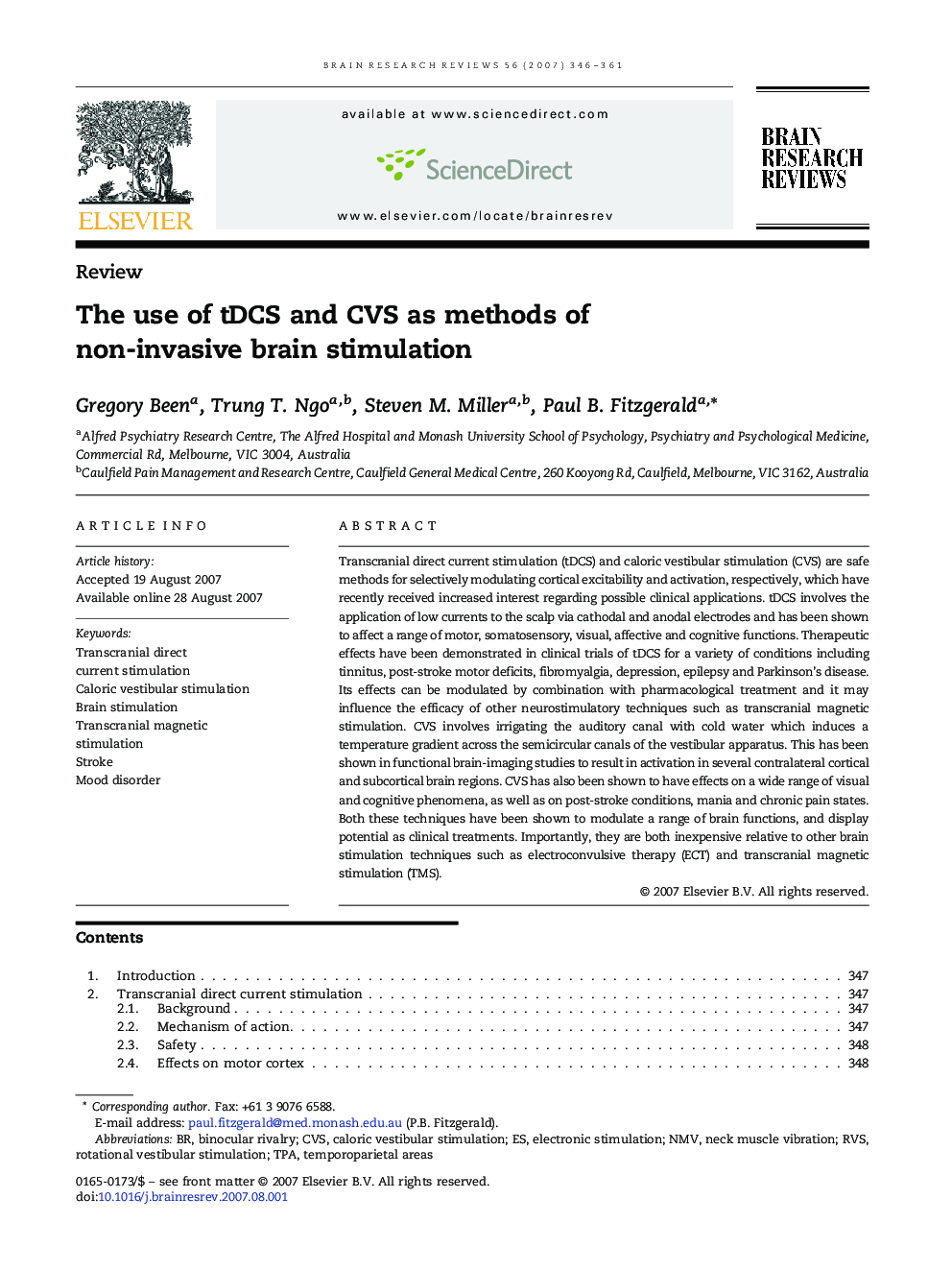| Article ID | Journal | Published Year | Pages | File Type |
|---|---|---|---|---|
| 4333996 | Brain Research Reviews | 2007 | 16 Pages |
Transcranial direct current stimulation (tDCS) and caloric vestibular stimulation (CVS) are safe methods for selectively modulating cortical excitability and activation, respectively, which have recently received increased interest regarding possible clinical applications. tDCS involves the application of low currents to the scalp via cathodal and anodal electrodes and has been shown to affect a range of motor, somatosensory, visual, affective and cognitive functions. Therapeutic effects have been demonstrated in clinical trials of tDCS for a variety of conditions including tinnitus, post-stroke motor deficits, fibromyalgia, depression, epilepsy and Parkinson's disease. Its effects can be modulated by combination with pharmacological treatment and it may influence the efficacy of other neurostimulatory techniques such as transcranial magnetic stimulation. CVS involves irrigating the auditory canal with cold water which induces a temperature gradient across the semicircular canals of the vestibular apparatus. This has been shown in functional brain-imaging studies to result in activation in several contralateral cortical and subcortical brain regions. CVS has also been shown to have effects on a wide range of visual and cognitive phenomena, as well as on post-stroke conditions, mania and chronic pain states. Both these techniques have been shown to modulate a range of brain functions, and display potential as clinical treatments. Importantly, they are both inexpensive relative to other brain stimulation techniques such as electroconvulsive therapy (ECT) and transcranial magnetic stimulation (TMS).
